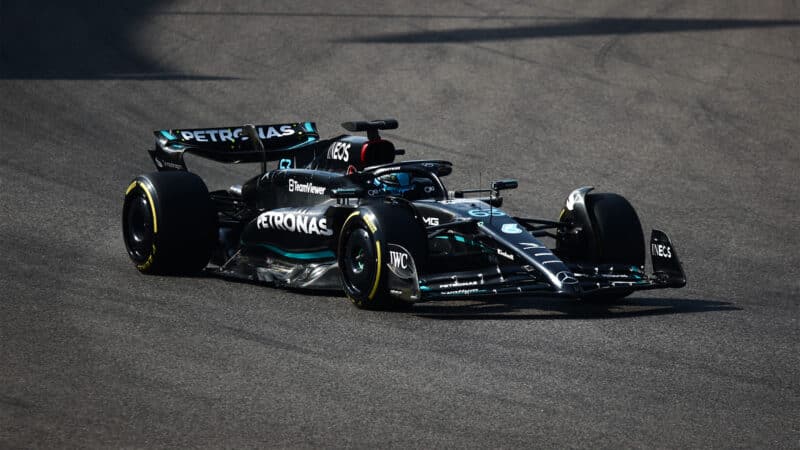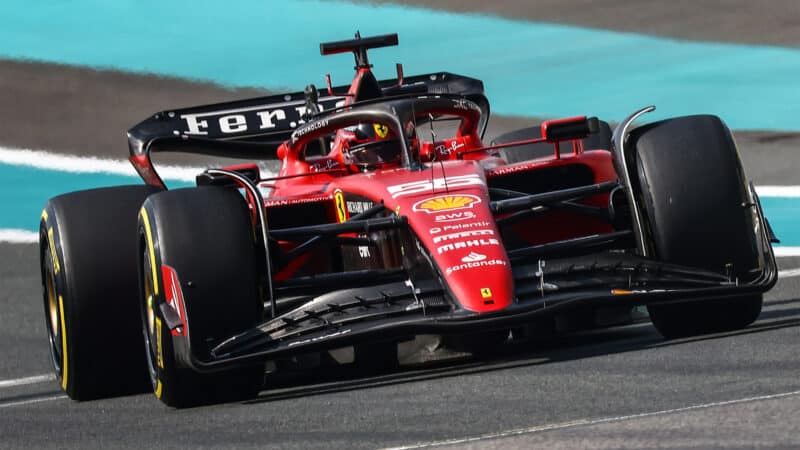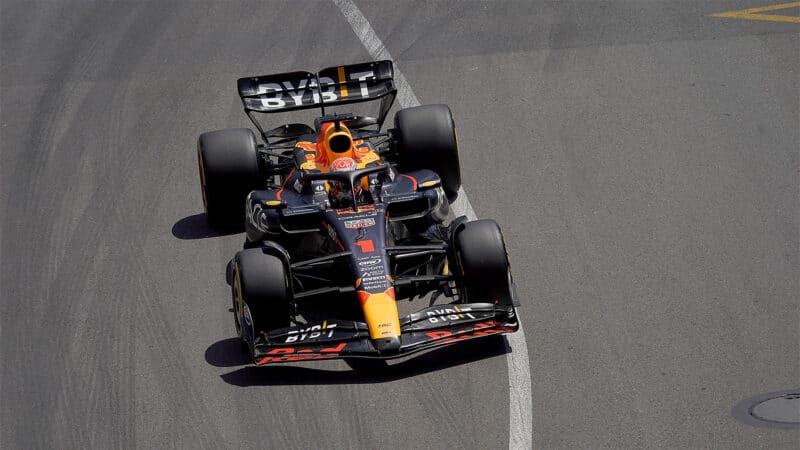But paradoxically these cars require suspensions which are inherently less accommodating than before because of the tiny ride height window in which they have to run to generate good ground effect. So on the one hand you have a generation of car which requires much more help from the suspension for its aero to work, but with a suspension which is inherently less helpful. So the theoretical best aero has to be compromised (as per the Red Bull’s underfloor) to allow the suspension to help the aero…
Mercedes’ James Allison expands on that conflict: “In the old days the mechanical ride height of the car and the aero performance were definitely not independent of each other but you could go off looking for the downforce and aero behaviour you believed would bring you lap time and there was more ability in the mechanical package to take some of the rough edges off of what the aero was doing. Because the car moved. These things don’t move at all, with the stiff suspensions we need with these floors. Which means that the ability of the roll bars and springs and dampers to help you out is less. Which correspondingly means when you’re designing the car, the people who are making the compromise decisions between aerodynamics and the mechanical behaviour have to give a bit more heed to the mechanical needs of the car than in the past. When you could just say aero is king and the suspension guys will make it work. It’s more of an intimate relationship now.
“We’ve got a much better handle now on how you get the aero platform and spring platform to be happier bedfellows. That is the main challenge with these cars.”

Mercedes W14 will be the last example of an abandoned concept — with the W15 set to follow in similar footsteps to the RB19
Getty Images
As well as the crucial geometry of the underfloor, the trade-off has implications upon gearbox length and chassis shape – and that’s for sure going to be where we’ll see how Mercedes has abandoned its concept of the previous two years. It’s not necessarily going to be about whether or not it has Red Bull sidepod shapes.
But at Ferrari, sidepod shapes are more significant. It has confirmed that it has abandoned its concept of 2022-23 (that of the big-fronted outwash sidepods) and that it will be pursuing a new aerodynamic philosophy. But talking with the Scuderia’s technical director Enrico Cardile, it’s apparent that his interpretation of how the suspension and aero interact with these cars is quite different to that of Newey’s (and now Allison’s).
“Suspension set up for me is a bit overrated,” he said. “Because you design your set-up options to cover a wide range. [With] set-up you try to have it so you have options for the biggest aero window. Suspension you try to design it to gain aero and have reasonable kinematic. The tyre wear is about how the car is operated, which is ruled by the aero behaviour of the car unless the suspension is massively wrong in compliance or kinematics. Suspension can play a role only if it’s bad.”
Maybe it’s just a different way of expressing a similar thing. Or maybe there really is a philosophical chasm between the ‘Red Bull’ and ‘Ferrari’ suspension philosophies.


